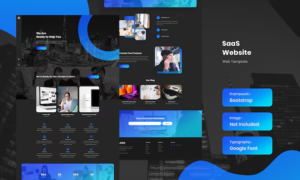Discover emerging trends from the second half of 2021 that are changing the ways that events and marketing teams work together
Last year, the Covid-19 pandemic necessitated innovative changes in the events marketing and management industry. As a result, many who used small point solutions to manage events struggled to adapt to new integration requirements and other industry changes. However, clients using flexible end-to-end platforms such as RainFocus thrived as they embraced the pivot to virtual and hybrid events. These platforms — and their customers — are poised to thrive this year and beyond.
Here are six trends that are practiced by those who use these successful end-to-end platforms that are continuing to the transform the event marketing and management industry:
1) A Hybrid Future
The pivot to virtual events created by the pandemic resulted in a powerful convergence of events and marketing. According to the RainFocus State of Events survey 2021, 59% of event teams reported that they expect to work more closely with marketing in the years to come. As the pandemic situation evolves, some in-person events are returning. However, a hybrid event experience featuring in-person and virtual offerings appears to be the best way forward. Hybrid events benefit attendees and organizers as they result in greater reach, accessibility, and engagement.
2) In-Person Event Transformation
Standalone in-person events and the in-person components of hybrid events are also undergoing many changes. Continued practice of pandemic safety protocols often requires attendee totals to be capped lower than before, increasing the popularity of micro-events. These more intimate events promote greater networking and engagement opportunities. In their 100 Event Trends For 2021 research, Event MB noted that in-person events should be elevated experiences that offer personalization, possible elements of nostalgia, and originality for attendees.
3) A Seamless Safety Approach
Safety remains a top priority. As in-person events increase, having a seamless, well-executed safety plan is essential. RFIDs and QR codes, for example, are likely to be increasingly popular as attendees prefer contactless systems. The use of event apps will also likely increase, while providing branded masks and other protective equipment provides an easy way to both promote safety and market the event.
4) An Integrated Platform
The push toward a hybrid future necessitates an integrated platform with the flexibility to deliver in-person, virtual, and hybrid events regardless of audience size or complexity. The use of a single unified platform, such as RainFocus, can replace multiple disparate platforms from different providers. Integrated platforms allow companies to seamlessly manage all aspects of the event while receiving valuable real-time data and insights.
5) New Virtual Engagement Ideas
The increase of virtual events has not been without its challenges. According to the RainFocus survey, 38.6% of event professionals found they had a lower engagement at their virtual events in 2020 compared to live events in previous years. Consequently, the industry is actively developing new virtual engagement ideas to beat “Zoom fatigue.” These include digital activities such as fitness videos, pet shows, sponsorship collaborations, and gamification.
6) Charging For Digital Delivery
Although many organizations initially offered free admission to their virtual events, many are beginning to charge for their virtual and hybrid events. Several different pricing structures have emerged, each with pros and cons. The growing number of companies that are charging for virtual experiences has motivated event teams to consider a flexible price model that meets the needs of their unique audiences.
Key Takeaways
Like nearly all industries, the event marketing and management industry is driven by post-pandemic plans. Hybrid events are likely to be the new norm, as in-person events transform into elevated experiences with seamless safety approaches. For maximum success, these hybrid events require integrated platforms, new virtual engagement ideas, and creative pricing.

































